
Material dibuat oleh UNAWE Indonesia
- Subject:
- Education
- Physical Science
- Material Type:
- Diagram/Illustration
- Date Added:
- 01/21/2016

Material dibuat oleh UNAWE Indonesia
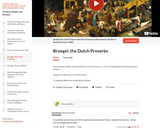
This art history video discussion examines Pieter Bruegel the Elder's "The Dutch Proverbs," 1559, oil on oak, 117 x 163 cm (Gemaldegalerie, Staatliche Museen zu Berlin).

This art history video discussion examines Pieter Bruegel the Elder's "The Tower of Babel," 1563, oil on panel, 114 x 155 cm (Kunsthistorisches Museum, Vienna).
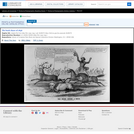
Democratic candidate James Buchanan, as a buck deer, crosses the finish line of a racecourse ahead of competitors Millard Fillmore and John C. Fremont. Spectators cheer in the stands behind. Fillmore appears as an emaciated horse, fallen on the course. Next, Fremont follows close on the heels of Buchanan. Fremont stands astride two horses: one with the head of New York "Tribune" editor Horace Greeley and the other the "wooly nag" of abolitionism. The latter here more closely resembles a filly than a nag. Greeley: "Monte why didn't you lean more on the wooly horse--you gave me all your weight--never mind we've beat the grey Filly [i.e., Fillmore] next time we'ill head off that hard old Buck." Fremont: "Get out--hang you and the Wooly Horse--I could beat that broken down silver grey "Filly" and the old Buck too--had I gone on my own hook." Fillmore: "Oh! Oh! why did'nt I stay in sweet Italy with my friend King Bomba and the lazy Neapolitans--Then I should not have been blowen up like a Bag of wind in this Chase." Buchanan: "Never mind Gentn. I could not "help" beating you, the American Nation wished it so--I will send you all to Ostend--and I promise you that I will have no Tailors in my white House. [As a youth Fillmore had been apprenticed to a tailor.] Mercy on me! to think that this Glorious People should be almost Pierced to Death [a reference to unpopular Democratic incumbent Franklin Pierce] by War and making Free States in this land of Liberty by a set of Fashion inventores 'I'll none of it.'"|Probably drawn by John L. Magee.|Published by John Childs, 84 So. 3rd St. Phila.|Title appears as it is written on the item.|Published in: American political prints, 1766-1876 / Bernard F. Reilly. Boston : G.K. Hall, 1991, entry 1856-18.
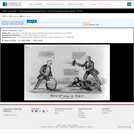
A pro-Buchanan satire, critical of the divisive or sectionalist appeal of the other two presidential contenders in the 1856 race. "Buck" or Buchanan (left) has evidently won a card game over Fremont (fallen at right) and Millard Fillmore (at right, blindfolded). Holding four aces and a large cauldron of "Union Soup" Buchanan vows, "I have fairly beaten them at their own game, and now that I have became possessed of this great "Reservoir" I will see that each and Every State of this great and glorious Union receives its proper Share of this sacred food." Fremont has tripped over a "Rock of Disunion" and fallen to the ground, still holding his large spoon "Abolition." He laments, "Oh, that I had been born a dog!--This is too much for mortal man to bear. Had I not stumbled over that "Blasted" rock I might have reached the fount of my ambition and with this good ladle 'Deal' to the North, and leave the South to 'Shuffle & Cut' off their mortal coil, by starvation, I shall have to 'Pass'!" Behind Fremont, Fillmore wanders blindfolded, holding a Know Nothing lantern (reflecting his party's nativist affiliation) and a spoon. He despairs, "I regret to say that 'Going It Blind' is a loosing Game, I did hope that I would be able to dip my spoon in the Pot without much difficulty.--My Hand is played out--'Buck' wins, and I am satisfied--Four aces can't be beat! and Buck holds them."|For sale by Nathaniel Currier at No. 2 Spruce St. N.Y.|Title appears as it is written on the item.|Gale, no. 803.|Weitenkampf, p. 118.|Published in: American political prints, 1766-1876 / Bernard F. Reilly. Boston : G.K. Hall, 1991, entry 1856-26.
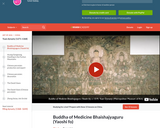
This art history video discussion examines the Buddha of Medicine Bhaishajyaguru (Yaoshi fo), c. 1319, Yuan dynasty, water-based pigments on clay mixed with straw, 24 feet, 8 inches x 49 feet 7 inches / 751.8 cm x 1511.3 cm (Metropolitan Museum of Art, New York).
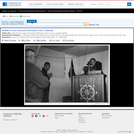
Man reading at podium while two men pray. Title transcribed from Ansel Adams' caption on verso of print. Original neg. no.: LC-A35-6-M-36. Gift; Ansel Adams; 1965-1968. Forms part of: Manzanar War Relocation Center photographs.
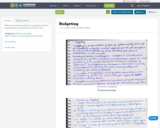
With this the students will have an insight about what is budgeting what is its importance and how is done
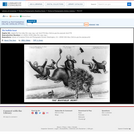
An optimistic view of the presidential prospects of Martin Van Buren, nominated at the Free Soil Party's August 1848 convention in Buffalo, New York. Here Van Buren rides a buffalo and thumbs his nose as he sends Democratic candidate Lewis Cass (left) and Whig Zachary Taylor flying. Both are about to land in Salt River. Van Buren says defiantly, "Clear the track! or I'll Ram you both!" Cass, whose "Wilmot Proviso" hat has already landed in the river, exclaims, "Confound this Wilmot Proviso, I'm afraid it will lead to something bad." (On the Wilmot Proviso see "Whig Harmony," no. 1848-21.) Cass's opposition to the proviso put him at odds with a large number of Democrats. Taylor speculates, "If I had stood on the Whig platform firmly, this would not have happened." He cites his reluctance to decisively embrace the regular Whig party doctrines. His cap flies in the air, spilling a packet of "Dead Letters." (On the "dead letter" matter see "The Candidate of Many Parties," no. 1848-24.) |Entered . . . 1848 by H.R. Robinson.|Probably drawn by "W.J.C."|Published by H.R. Robinson 31 Park Row N.Y.|Title appears as it is written on the item.|Weitenkampf, p. 92.|Forms part of: American cartoon print filing series (Library of Congress)|Published in: American political prints, 1766-1876 / Bernard F. Reilly. Boston : G.K. Hall, 1991, entry 1848-38.
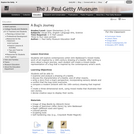
Students will explore contemporary artist John Baldessari's mixed-media work of art inspired by a 16th-century drawing of a beetle. After writing a story about a bug's journey, each student will create a mixed-media representation of a bug that is inspired by the contemporary artist's work.

If you build it carefully, this crazy contraption demonstrates one of the basic laws of nature.

Construct and measure the energy efficiency and solar heat gain of a cardboard model house. Use a light bulb heater to imitate a real furnace and a temperature sensor to monitor and regulate the internal temperature of the house. Use a bright bulb in a gooseneck lamp to model sunlight at different times of the year, and test the effectiveness of windows for passive solar heating.

This is a basic guide to starting a compost system at an elementary school. It includes steps for building a compost bin and an instructional booklet in English, Spanish, and Braille.

A bungee jump involves jumping from a tall structure while connected to a large elastic cord. Design a bungee jump that is "safe" for a hard-boiled egg. Create a safety egg harness and connect it to a rubber band, which is your the "bungee cord." Finally, attach your bungee cord to a force sensor to measures the forces that push or pull your egg.

A zip line is a way to glide from one point to another while hanging from a cable. Design and create a zip line that is safe for a hard-boiled egg. After designing a safety egg harness, connect the harness to fishing line or wire connected between two chairs of different heights using a paper clip. Learn to improve your zip line based on data. Attach a motion sensor at the bottom of your zip line and display a graph to show how smooth a ride your egg had!

This resource is a video abstract of a research paper created by Research Square on behalf of its authors. It provides a synopsis that's easy to understand, and can be used to introduce the topics it covers to students, researchers, and the general public. The video's transcript is also provided in full, with a portion provided below for preview:
"Tropical maize hybrid, a single cross of flint and dent inbred lines, is an important crop throughout the Americas and Africa. Crop yield, however, is highly dependent on nitrogen availability, and fertilizers are therefore often necessary to increase production. Developing more nitrogen-efficient maize would not only cut costs for farmers, it would also increase crop yield and reduce environmental impacts. But how do you make a plant more nitrogen efficient? The performance and production of crops can be improved by selectively crossing individuals with desired traits. When such plants are crossed, they produce hybrids that are often bigger, stronger, and more vigorous than either of the parent plants. By carefully choosing which individuals are used in creating these hybrids, specific traits, such as nitrogen efficiency, can be selected for..."
The rest of the transcript, along with a link to the research itself, is available on the resource itself.

This resource is a video abstract of a research paper created by Research Square on behalf of its authors. It provides a synopsis that's easy to understand, and can be used to introduce the topics it covers to students, researchers, and the general public. The video's transcript is also provided in full, with a portion provided below for preview:
"US researchers are finding that what goes for the work place, the playing field, and the home goes for getting the most out of fuel-producing yeasts: teamwork makes the dream work. Inspired by the give-and-take that enables the community of microorganisms found in lichens to thrive in a range of environments, the team paired photosynthetic bacteria with yeast strains to streamline the production of energy-dense fatty acids. That two-way interaction could point to new ways of making biofuels a more attractive alternative energy source. Yeast are among the most industrious organisms on earth. Through the power of fermentation, these microorganisms can take sugar and turn it into clean-burning fuel. But even when genetically optimized to withstand high temperatures and boozy volumes of fuel production, yeasts must still be fed their sweet treat externally. That adds extra processing steps and drives up cost..."
The rest of the transcript, along with a link to the research itself, is available on the resource itself.
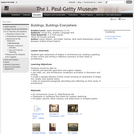
Students gain awareness of shapes in architecture by creating a painting of their school and writing a reflective summary of their study of architecture.

Earthquakes happen when forces in the Earth cause violent shaking of the ground. Earthquakes can be very destructive to buildings and other man-made structures. Design and build various types of buildings, then test your buildings for earthquake resistance using a shake table and a force sensor that measures how hard a force pushes or pulls your building.
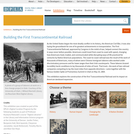
As the United States began the most deadly conflict in its history, the American Civil War, it was also laying the groundwork for one of its greatest achievements in transportation. The First Transcontinental Railroad, approved by Congress in the midst of war, helped connect the country in ways never before possible. Americans could travel from coast to coast with speed, changing how Americans lived, traded, and communicated while disrupting ways of life practiced for centuries by Native American populations. The coast-to-coast railroad was the result of the work of thousands of Americans, many of whom were Chinese immigrant laborers who worked under discriminatory pressures and for lower wages than their Irish counterparts. These laborers braved incredibly harsh conditions to lay thousands of miles of track. That trackthe work of two railroad companies competing to lay the most miles from opposite directionscame together with the famous Golden Spike at Promontory Summit in Utah on May 10, 1869. This exhibition explores the construction of the first Transcontinental Railroad and its impact on American westward expansion. This exhibition was created as part of the DPLAs Digital Curation Program by the following students as part of Professor Krystyna Matusiak's course "Digital Libraries" in the Library and Information Science program at the University of Denver: Jenifer Fisher, Benjamin Hall, Nick Iwanicki, Cheyenne Jansdatter, Sarah McDonnell, Timothy Morris and Allan Van Hoye.